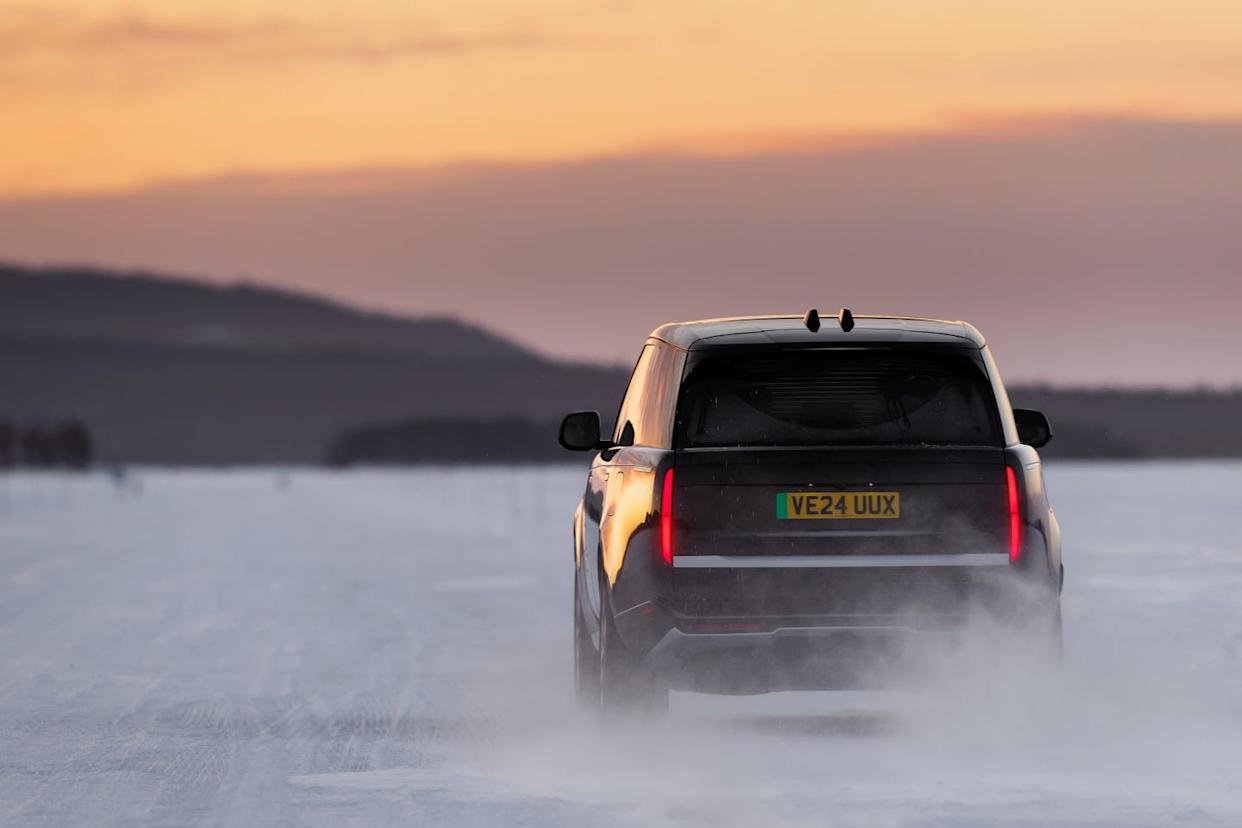
Do not adjust your calendar—you really are about to read a report on an ice-driving event in August. The program happened back in March, but JLR imposed an embargo on driving impressions that didn’t lift until the company held a second event in Britain. Which is why you’re looking at a frozen lake in summer heat.
The Range Rover EV skates across a frozen lake in Sweden’s Lapland region, like a stealthy-fast hockey defenseman looking for someone to check. The ideal opponent? Mercedes’s electric G580. Down the line, a playoff looms between these EV leviathans.
“Whoever goes off into a snowbank has to buy the beers later,” says shotgun rider Matt Becker, Jaguar Land Rover’s vehicle engineering director and former chassis maestro at both Lotus and Aston Martin. Becker needn’t worry. The Range Rover’s smart all-wheel-drive system operates seemingly at the speed of thought, making it impossible for me to trade ends on a 200-meter-radius handling circle. Even on ice that’s polished to a Zamboni sheen, in a car wearing 21-inch Pirelli all-season tires.
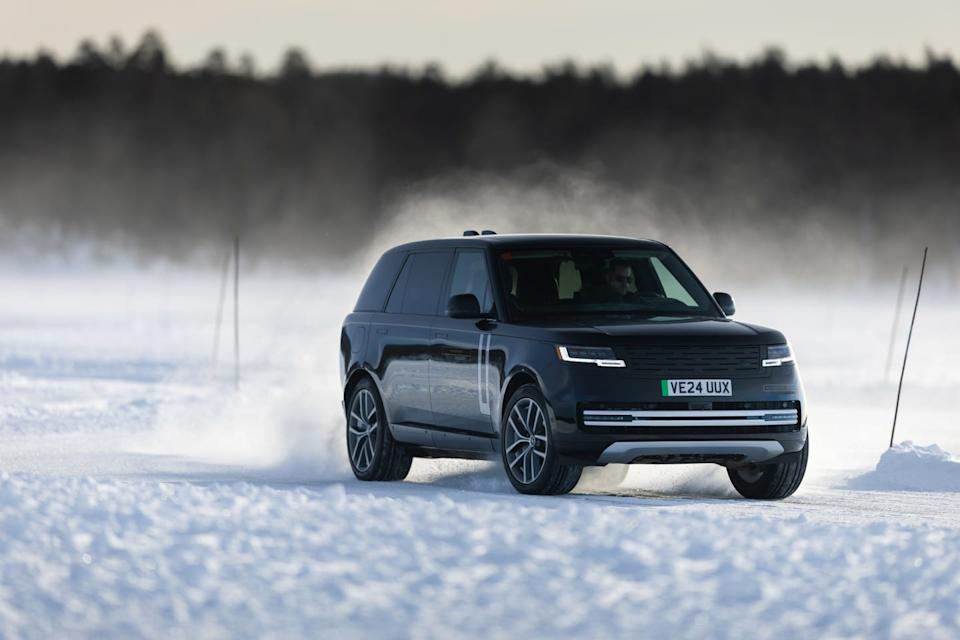
Looking wolfish in black against the Arctic background, this Range Rover is among nearly 120 JLR prototypes here in Arjeplog, where company engineers have shivered and tinkered over decades of winter testing. Red kill switches sprout from the leather dashboard to halt the vehicle and cut power. Otherwise, the brand’s first-ever EV closely resembles a production version that’s expected to ship to North America next year. That’s the current plan, anyway.
JLR took me to Sweden in March to experience the Range Rover EV, but under the condition Road & Track didn’t publish driving impressions until a media embargo lifted. And then? Well, although “forgotten about” is maybe a little strong, it took the occurrence of a second prototype drive at the Goodwood Festival of Speed, which R&T didn’t attend, for JLR to unfreeze our right to talk about the first.
But if reading about frozen-lake fun in the dog days of summer feels tardy, so is the Range Rover itself. Since my first drive, JLR has pushed the Rover’s targeted on-sale date into 2026, citing a need to conduct further testing and adapt to various market demands.
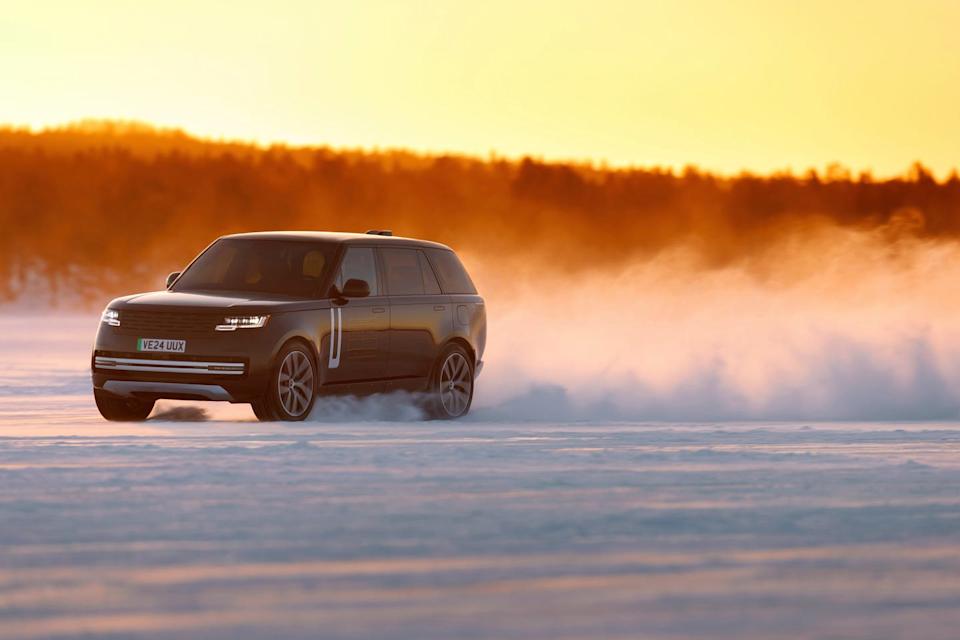
Range Rover has picked a confounding time to launch a new model line. The changing world includes import tariffs, although the Range Rover should come in under the 10 percent surcharge being slapped on cars from the United Kingdom. It will also need to win EV customers without the axed $7500 sweetener in federal tax credits. So, plenty is still up in the air.
Yet, bad timing aside, this battery-powered Brit is worth toasting: A Range Rover pairs with electricity like caviar and a chaser of champagne. Much like the Rolls-Royce Spectre EV, becoming even quieter and creamier is a good fit for this luxury brand.
Especially when, like the electric G-wagen, the Range Rover performs better off-road than its gasoline versions. “Energy efficiency” and “cleaner emissions” may no longer be buzzwords in 2025, so consider those benefits the side dish.
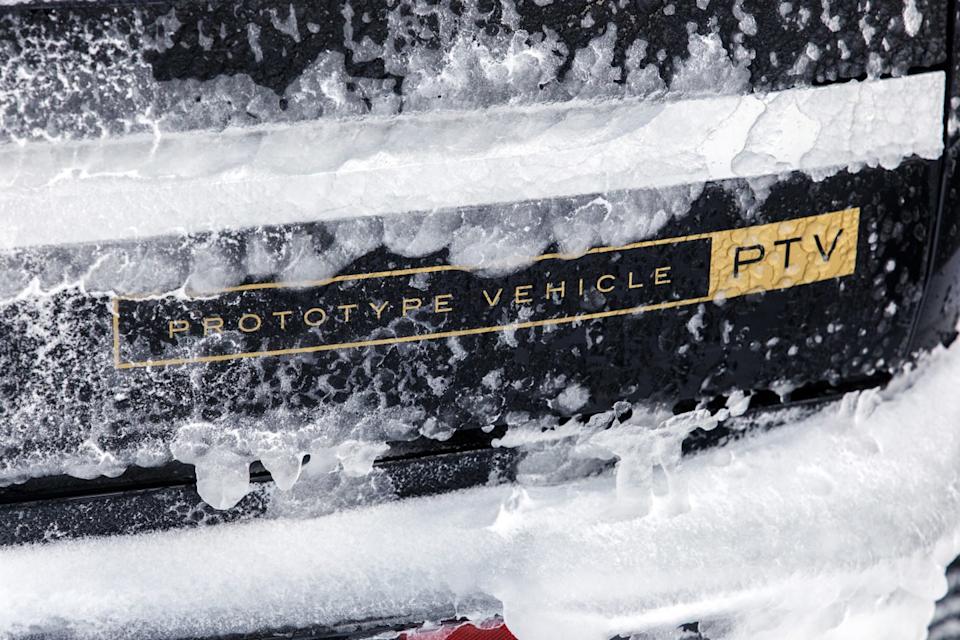
Land Rover has no intention of telling internal-combustion loyalists that they are no longer welcome. Instead, it will place the most sensible bet in today’s whipsawing industry, one facilitated by the flexibility of the company’s MLA-Flex architecture. The idea is to give a choice of EV, plug-in hybrid, or pure gasoline propulsion, and there are also diesels for other parts of the world. The U.S. remains a critically important market, snapping up a leading 36 percent of the full-size Range Rover’s roughly 70,000 annual global production.
The architecture is a model of aluminum-intensive design, including bending stiffness of 54,000 newtons per degree. To these sturdy bones, the EV version fits a permanent-magnet motor at each axle. You’ll find the same mounting points and sophisticated five-link independent rear suspension that’s in gasoline models.
Those dual motors, developed entirely in-house with silicon carbide inverters, deliver up to 542 hp and 628 lb-ft of torque. That isn’t as much as the quad-motor G580, which has 579 hp and up to 859 lb-ft. JLR engineers say they expect the EV to meet or beat the V-8 model from 0 to 60 mph. Figure roughly 4.6 seconds, versus 4.1 seconds for the Mercedes.

The Rover’s flexible architecture and holistic design approach pay off with an estimated curb weight of about 6000 pounds. If the brand can pull it off, the impressive metric is on par with a PHEV Range Rover, about 750 pounds less than the boxy Benz, and 3000 less than a mammoth Cadillac Escalade IQ.
Stopwatches aside, this SUV felt quick and locked in on any surface I drove over, without sacrificing the effortless throttle progression that Rover customers prefer. Chalk that up to electricity. Rover says its all-wheel-drive system detects and reacts to wheelspin up to 100 times faster than the gasoline versions. Power electronics and control modules package into the existing transmission tunnel. Their duties include blending torque between front and rear axles, or side to side via electronically controlled differentials.
From a standing start on meter-thick ice, I floored the throttle. The Rover hesitated for a beat, its systems sampling and processing the surface, then dug in and rocketed ahead with no discernible slippage. Next, a handling course, which JLR re-creates each year to centimeter-level accuracy, engineers say a person can’t walk the polished surface without taking a tumble. But the Rover hung on at impressively high speeds and cornering forces, its responses aided by familiar rear steering and new twin-chamber dampers.
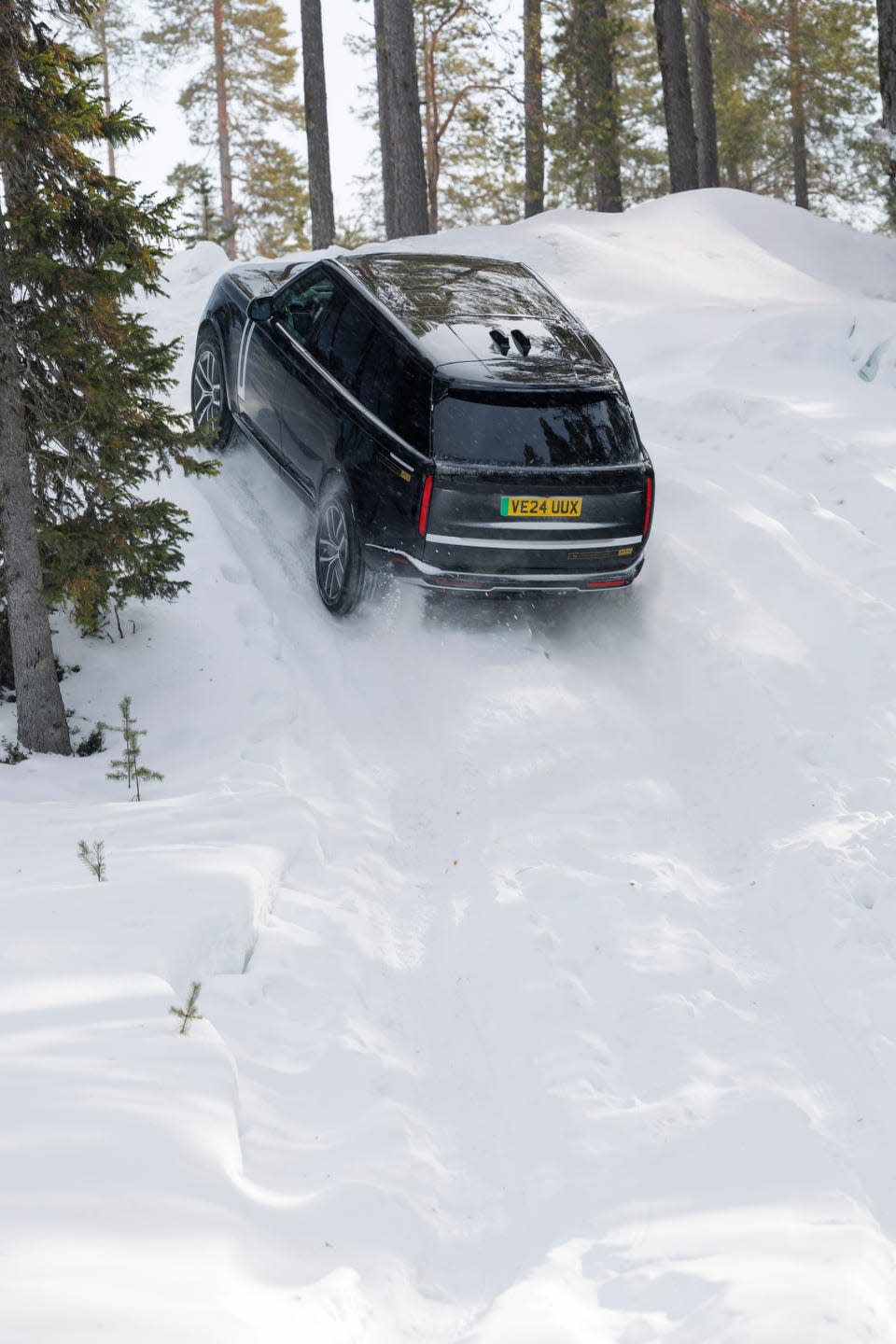
In the opulent cabin, whispering wind outside virtually drowns out humming motors. The overriding vibe is of a Rover that better isolates occupants from any maelstrom outside—perhaps in one of those imposing convoys as seen on Succession or a British political drama—while reminding its chauffeur that a fast escape is always possible. The richly wrapped steering wheel dials into corners with serene accuracy and a judicious sprinkle of feedback.
As my Rover churned through Sweden, dramatically backlit by sparkling snow, it was clear that the brand has no interest in electric design statements. Aside from a few EV screen displays, and a closed grille that only heightens the Rover’s yachtlike forms, the electric version is a carbon copy of gasoline models, minus much emitted carbon.
All metalwork is shared between gas and electric models. Approach and departure angles are identical, with a nominal difference in break-over angle. The air suspension still kneels deeply for graceful entry to this gilded carriage. The maximum adjustable ride height is just 0.4 inch lower than non-PHEV gasoline versions, and at 10.4 inches, it tops the Mercedes’s 9.9 inches. The EV will tow 7000 pounds, with a system that engineers say will confidently predict real-world towing range to soothe driver anxiety.
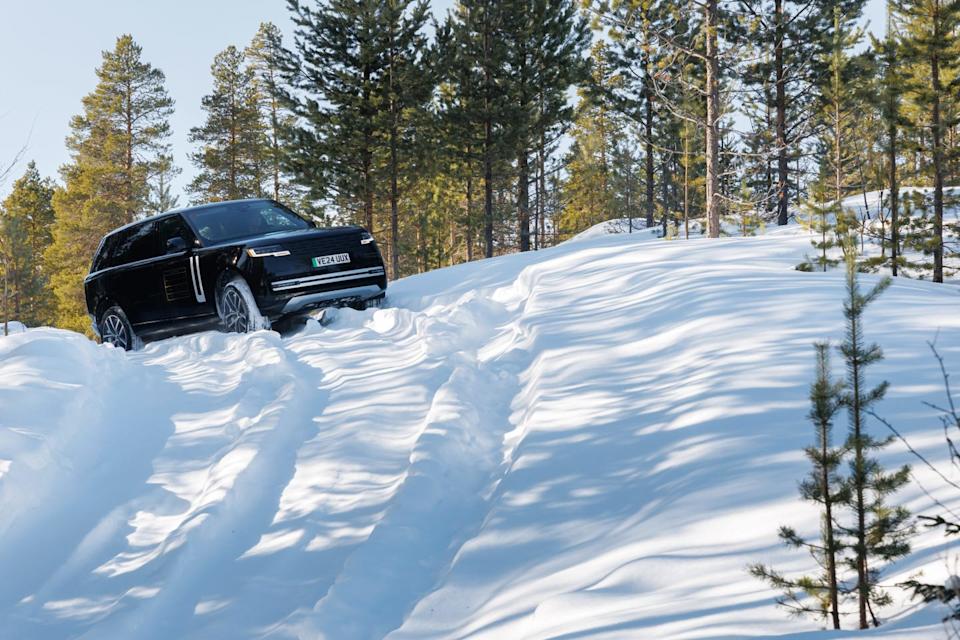
Confidence extends to forested off-road tracks piled with snow. In modern four-by-four fashion, the Rover feels designed for the accidental off-roader. Think the dad who makes a wrong turn at the Christmas-tree farm and finds himself facing actual slopes or traction traps. Not to worry, kids: Off-road cruise control lets this SUV essentially walk itself through the woods with ridiculous nonchalance. Regenerative braking is tuned for specific driving modes via the console’s Terrain Progress knob. That includes one-pedal ability to halt on daunting 28-degree grades—Hill Hold is triggered automatically—and proceed without touching a brake pedal. I only hope electric-Rover buyers will experience the latest off-road wizardry for themselves at least occasionally.
On paper, the electric G-class one-ups its British peer with a four-motor design. Lynfel Owen, Range Rover chief engineer, compliments Mercedes’s ingenuity. But he says the engineering team considered and rejected a one-per-wheel approach as it requires larger, heavier motors to deliver big numbers at each corner when the opposite wheel is slipping. A differential allows one motor to split its effort, diverting up to 100 percent.
Of course, one thing is missing: The Range Rover won’t be able to do the G’s tank-turn party trick. “But our two-motor design is more efficient, weighs less, and improves packaging and performance,” Owen says.
The Rover’s advanced 800-volt architecture will allow it to charge quickly, at a peak rate of up to 350 kW from a sufficiently powerful DC socket. The prototype I drove flaunted a Tesla-style NACS port on each rear fender, ostensibly for more flexible positioning at stations without blocking other cars. Executives weren’t ready to confirm that arrangement for production.
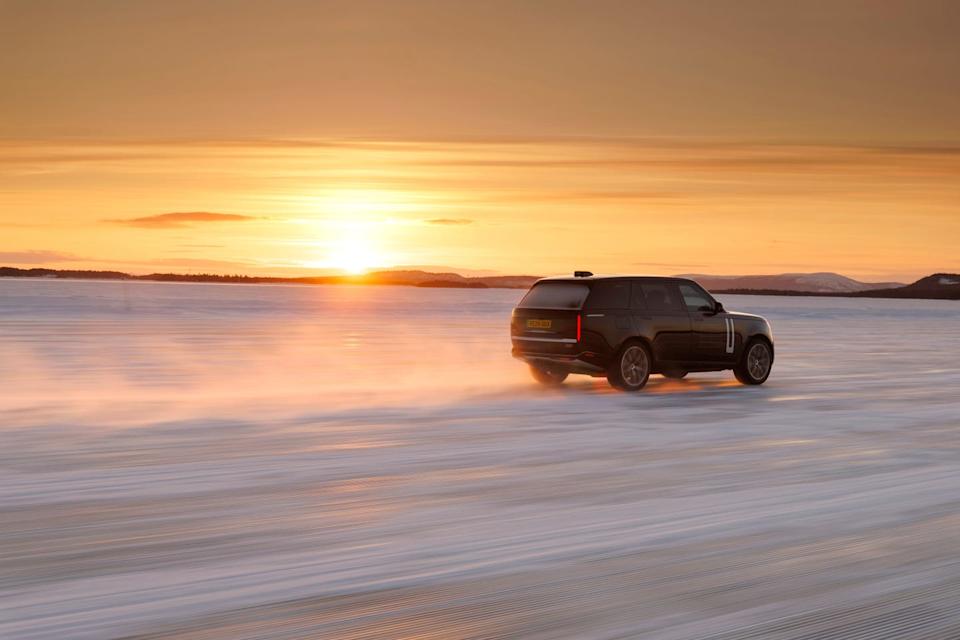
A well-armored battery pack tips 344 prismatic cells on their sides in two stacked tiers, with a usable 117 kWh. No official word on driving range, but my calculations suggest roughly 280–300 miles on the EPA test cycle, versus the Benz’s 239 miles. The battery is designed to lose just 10 percent of its capacity after eight years of operation.
The brand further claims its ThermAssist technology will be the most advanced thermal-management system of any EV. While cars with an engine waste most of their potential energy, an upside is surplus heat. EVs don’t have that luxury, so the development mantra for electric Rovers is that “every watt is precious.” With eight onboard cooling loops, the thermal system will evaluate 700 environmental and onboard parameters to prioritize where those watts are most needed: cabin, battery, or powertrain. Engineers claim the system reduces heating energy consumption by 40 percent, boosting driving range and cabin comfort in the cold. The system can recover heat at ambient temperatures as low as –10 degrees Fahrenheit. Winter testing will ensure cold starts at up to –22 degrees, even after long idle periods. The Rover is designed to sit outdoors for weeks in winter weather and lose little juice.
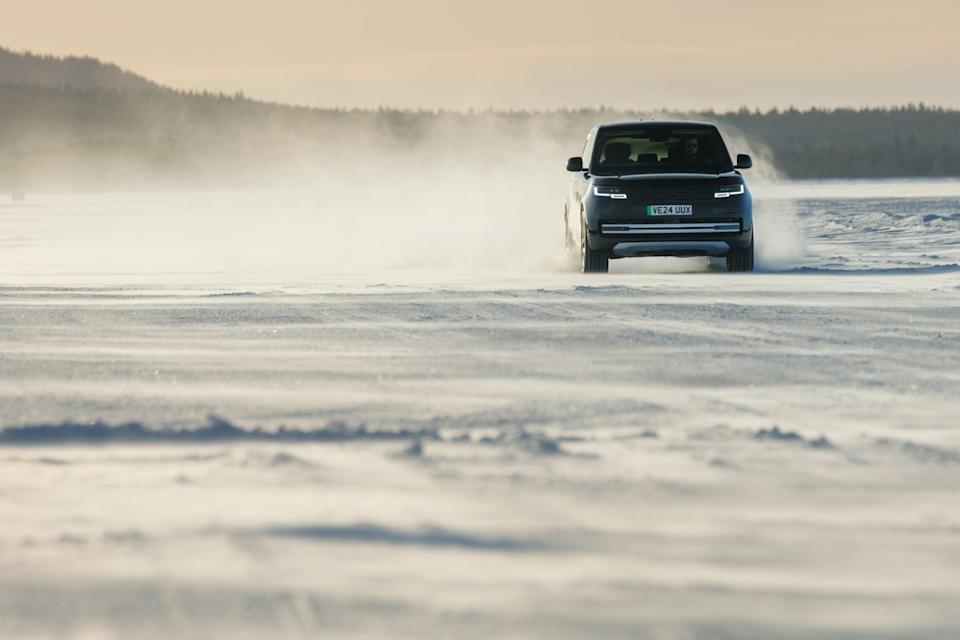
As noted, other market challenges have sprung up in JLR’s path, like the many icebergs this automaker must dodge en route to America. Even in the best of times, JLR can’t be certain how many Rover customers are ready to give plugs a chance. No wonder JLR seems to be stalling with its electric flagship.
When it does arrive, executives hint at prices in line with today’s Autobiography editions, whose base prices range from about $157,000 to $168,000. Mercedes is asking $162,650 for its G580, so that feels about right. At these four-by-four heights, monthly payments aren’t a top concern.
A greener, quieter, and more capable Range Rover will surely bring new friends to this exclusive party. Will there be enough to justify the pricey invitations?
You Might Also Like

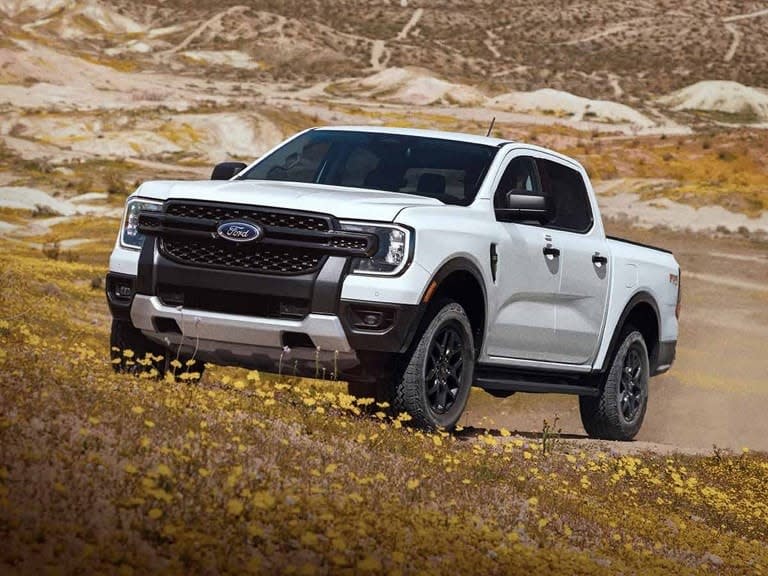




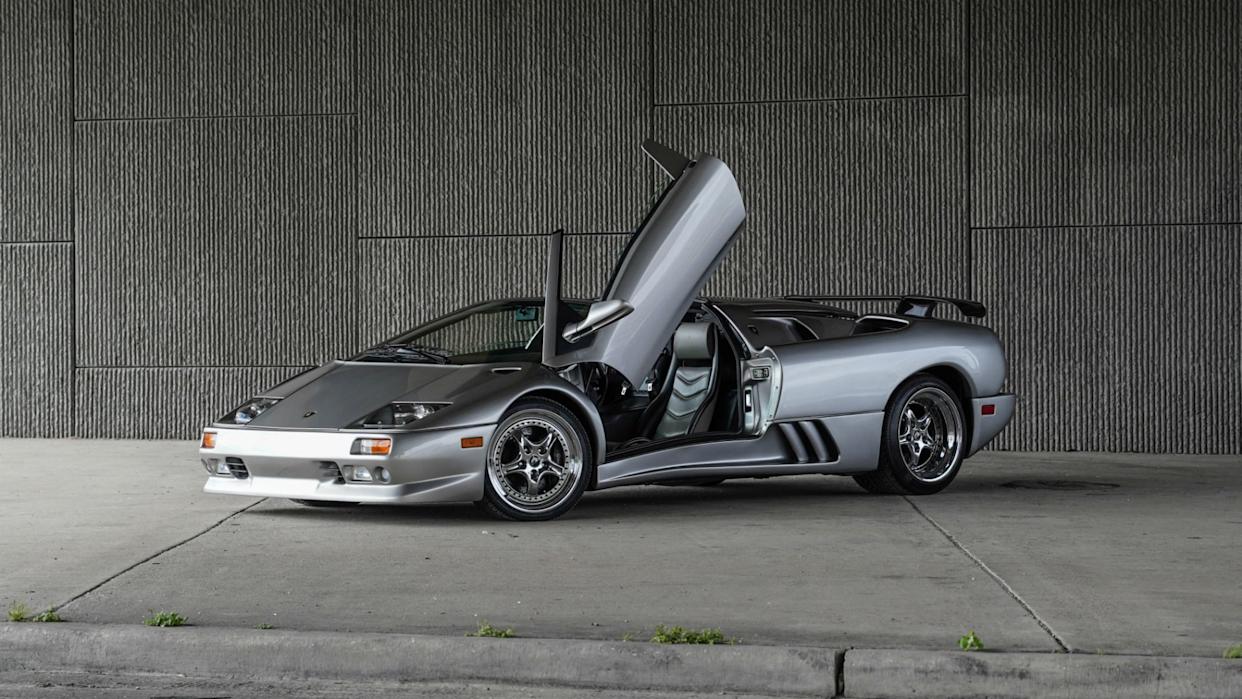

Comments